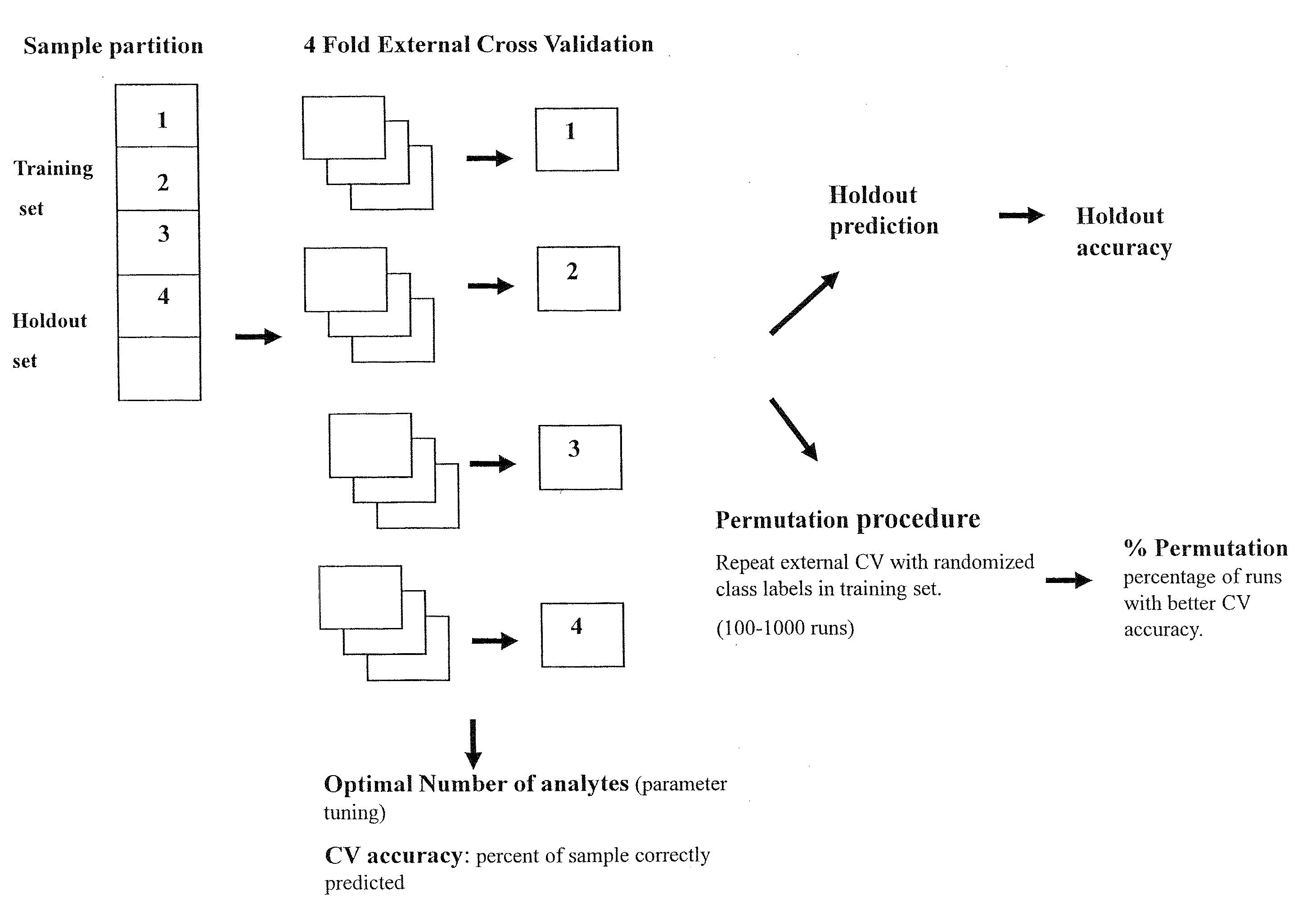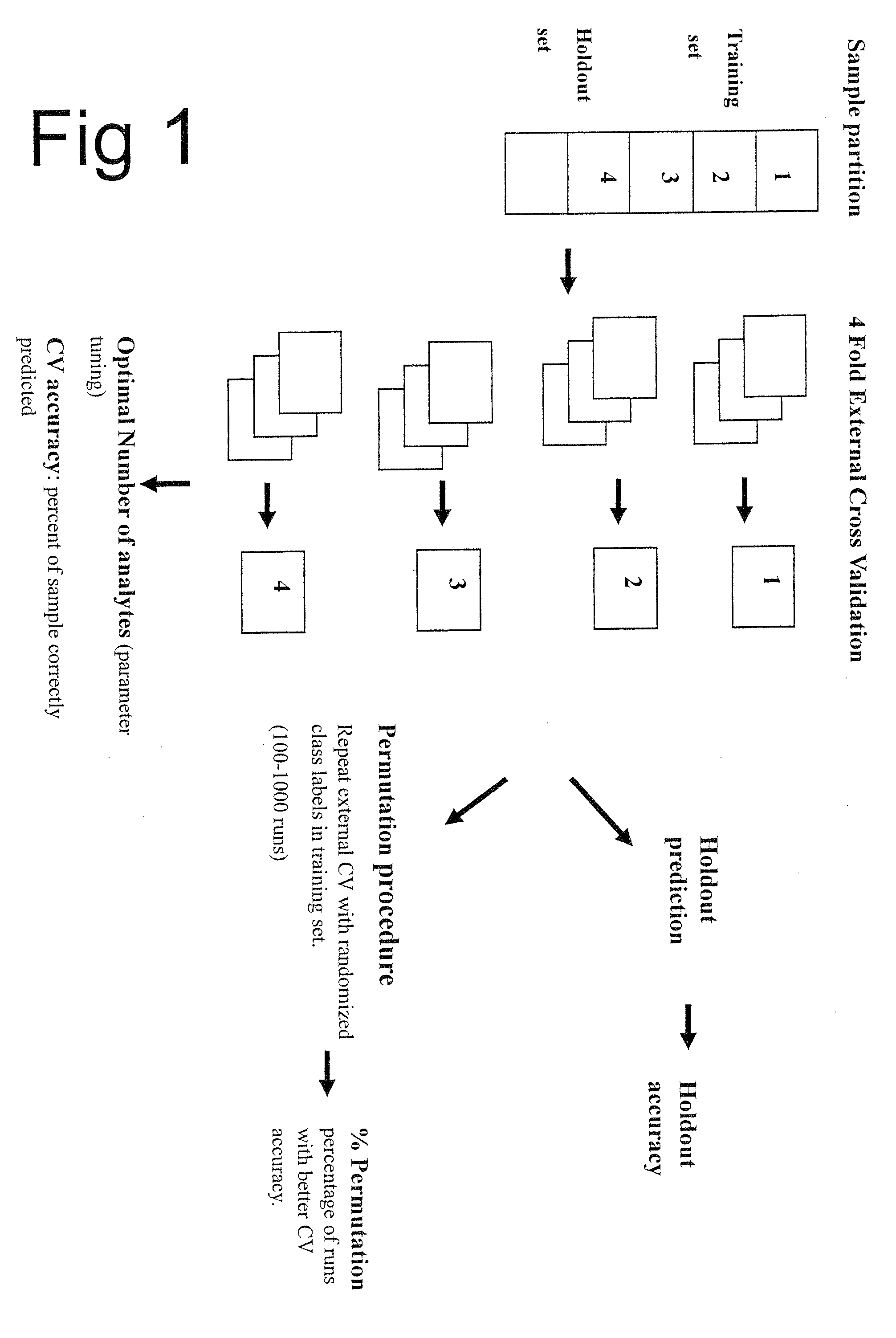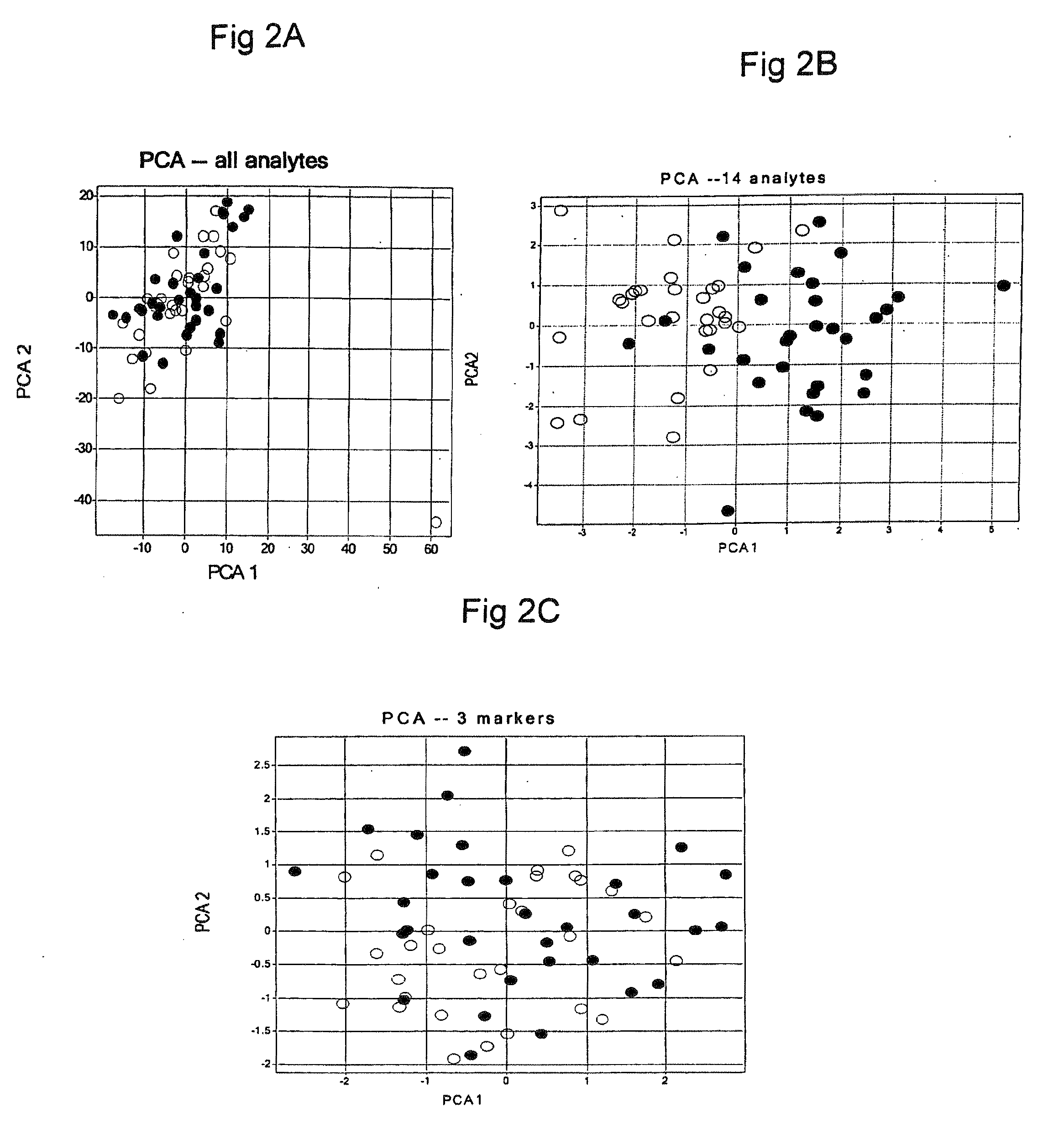Methods and Kits for Predicting Treatment Response in Type II Diabetes Mellitus Patients
a diabetes mellitus and treatment response technology, applied in the field of methods and kits for predicting treatment response in type ii diabetes mellitus patients, can solve the problems of high difficulty and generally not discrimination, and achieve the effect of improving the patient's clinical response ra
- Summary
- Abstract
- Description
- Claims
- Application Information
AI Technical Summary
Benefits of technology
Problems solved by technology
Method used
Image
Examples
example 1
Experimental Design
[0051]Male subjects aged 30 to 70 years with a documented history of stable T2DM for no more than 10 years duration were eligible for the study described herein if they had been previously treated with diet and exercise alone, monotherapy or low-dose combination therapy. Fasting plasma glucose (FPG) at screening could not exceed 225 mg / dL for subjects treated with diet and exercise alone or 180 mg / dL for subjects receiving monotherapy or low-dose combination therapy. HbA1c was required to be within 5.7 to 10.0% with the following conditions; subjects with HbA1c between 5.7 and 9% must have been diabetic for less than 5 years and treated with mono or low dose combination therapy and have a FBG of 125 to 180 mg / dL, and subjects with HbA1c between 9.1 and 10.0% must not have been treated with combination therapy. In addition, body mass index must have been within the range of 25 to 37.5 kg / m2, for subjects aged 35-55 years, or 25 to 35.0 kg / m2 for subjects aged 56 to...
example 2
Definition of Treatment Response (“Responder”) Using a Composite Score of Glycemic-Lowering Efficacy
[0062]Originally, efficacy response was defined as a FPG decrease of greater than 30 mg / dl. However, glucose is highly variable and influenced by short-term changes in diet, activity or stress, whereas integrated measures of glycemic response can estimate whether a patient's average glucose has changed over time (weeks to months) in response to treatment [Tahara, Y. & Shima, K. Kinetics of HbA1c, glycated albumin, and fructosamine and analysis of their weight functions against preceding plasma glucose level. Diabetes Care 18, 440-447 (1995)]. Fructosamine, whose half-life is determined by that of albumin, provides a measure of integrated glucose over a period of 2-4 weeks. HbA1c, a form of glycosylated hemoglobin, is the gold standard measure of integrated glucose over a 6-12 week period.
[0063]This analysis used an eight week study, which is less than the twelve weeks generally requir...
example 3
Early Indicators of Drug Treatment Response: the Cross-Drug or Individual Drug Fingerprint at Week 4 which is Predictive of Week 8 Treatment Response
[0089]The goal of this study was to identify “early indicator” analytes measured at week 4 of treatment (after being adjusted for week 0 baseline values) that could be used to predict drug response at week 8 of treatment. Similar to the analysis of baseline analytes predictive of treatment response, the exercise was repeated for analytes measured at 4 weeks. Conventional glycemic markers (glucose, fructosamine and HbA1c) were again excluded from the analysis.
[0090](a) Cross-Drug Fingerprint
[0091]Classification analysis was applied to 4 week data from 75 clinical subjects who were treated with one of the 3 study drugs or placebo, seeking response markers common to all three drugs. PAM and SVM did not yield significant classifiers (Table 9). As shown in Table 9, the number of analytes indicates the optimal number that maximized prediction...
PUM
 Login to View More
Login to View More Abstract
Description
Claims
Application Information
 Login to View More
Login to View More - R&D
- Intellectual Property
- Life Sciences
- Materials
- Tech Scout
- Unparalleled Data Quality
- Higher Quality Content
- 60% Fewer Hallucinations
Browse by: Latest US Patents, China's latest patents, Technical Efficacy Thesaurus, Application Domain, Technology Topic, Popular Technical Reports.
© 2025 PatSnap. All rights reserved.Legal|Privacy policy|Modern Slavery Act Transparency Statement|Sitemap|About US| Contact US: help@patsnap.com



